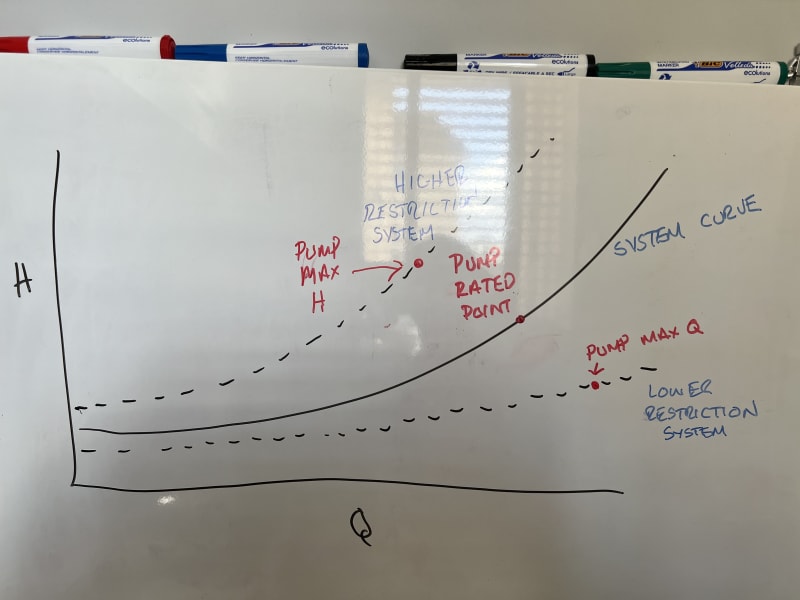Asisraja D
Mechanical
- Jan 3, 2024
- 193
Hello professionals
Thank you for going to help me.
We have pump with capacity of
180 m3/hr , head = 45 meters.
Pump nozzle size is 100mm x 80mm
But in our plant we already installed piping for suction with 150mm inlet piping and discharge with 250mm outlet piping to the plant
(This is cooling water supply and return line both are the same size as 250mm)
So I calculated the velocity method (Q=A X V) with the known pipe size and flow rate I get 1m/s.
Few more details for your reference:
1.Pipe material is Mild steel "C" class pipe
2.Pipe length from cooling tower sump to plant supply (250mm) EOL is 80 meters.
3.Pipe length from Main header to sub-header supply (200mm) EOL is 30 meters.
My doubt is all about discharge nozzle size with discharge piping size.
Did we take wrong piping size for discharge line?
Is there any rule of thumb or design considerations for pump piping as applicable to liquid flow.
I have attached my hand sketch for more clarity.
Thank you for going to help me.
We have pump with capacity of
180 m3/hr , head = 45 meters.
Pump nozzle size is 100mm x 80mm
But in our plant we already installed piping for suction with 150mm inlet piping and discharge with 250mm outlet piping to the plant
(This is cooling water supply and return line both are the same size as 250mm)
So I calculated the velocity method (Q=A X V) with the known pipe size and flow rate I get 1m/s.
Few more details for your reference:
1.Pipe material is Mild steel "C" class pipe
2.Pipe length from cooling tower sump to plant supply (250mm) EOL is 80 meters.
3.Pipe length from Main header to sub-header supply (200mm) EOL is 30 meters.
My doubt is all about discharge nozzle size with discharge piping size.
Did we take wrong piping size for discharge line?
Is there any rule of thumb or design considerations for pump piping as applicable to liquid flow.
I have attached my hand sketch for more clarity.

